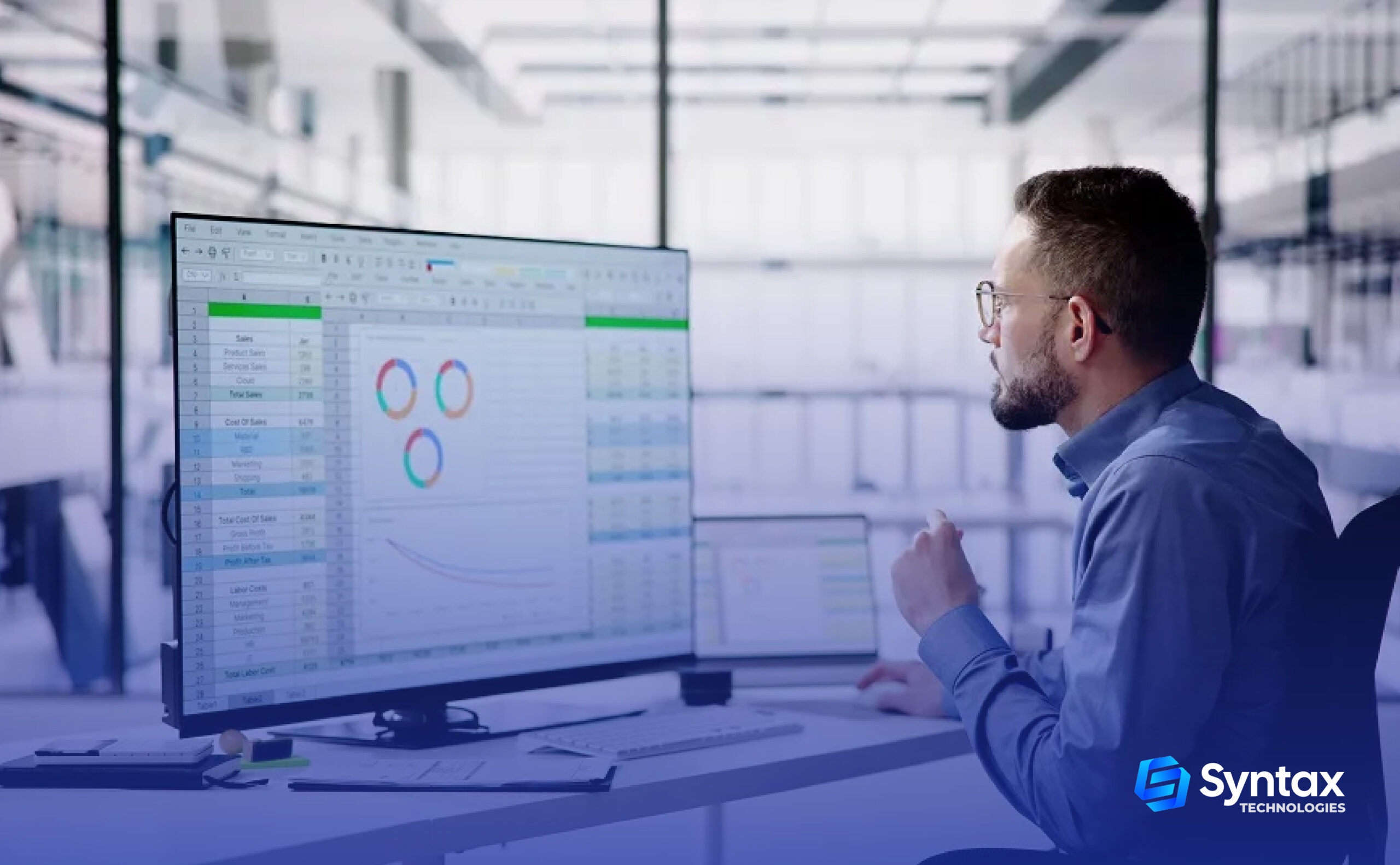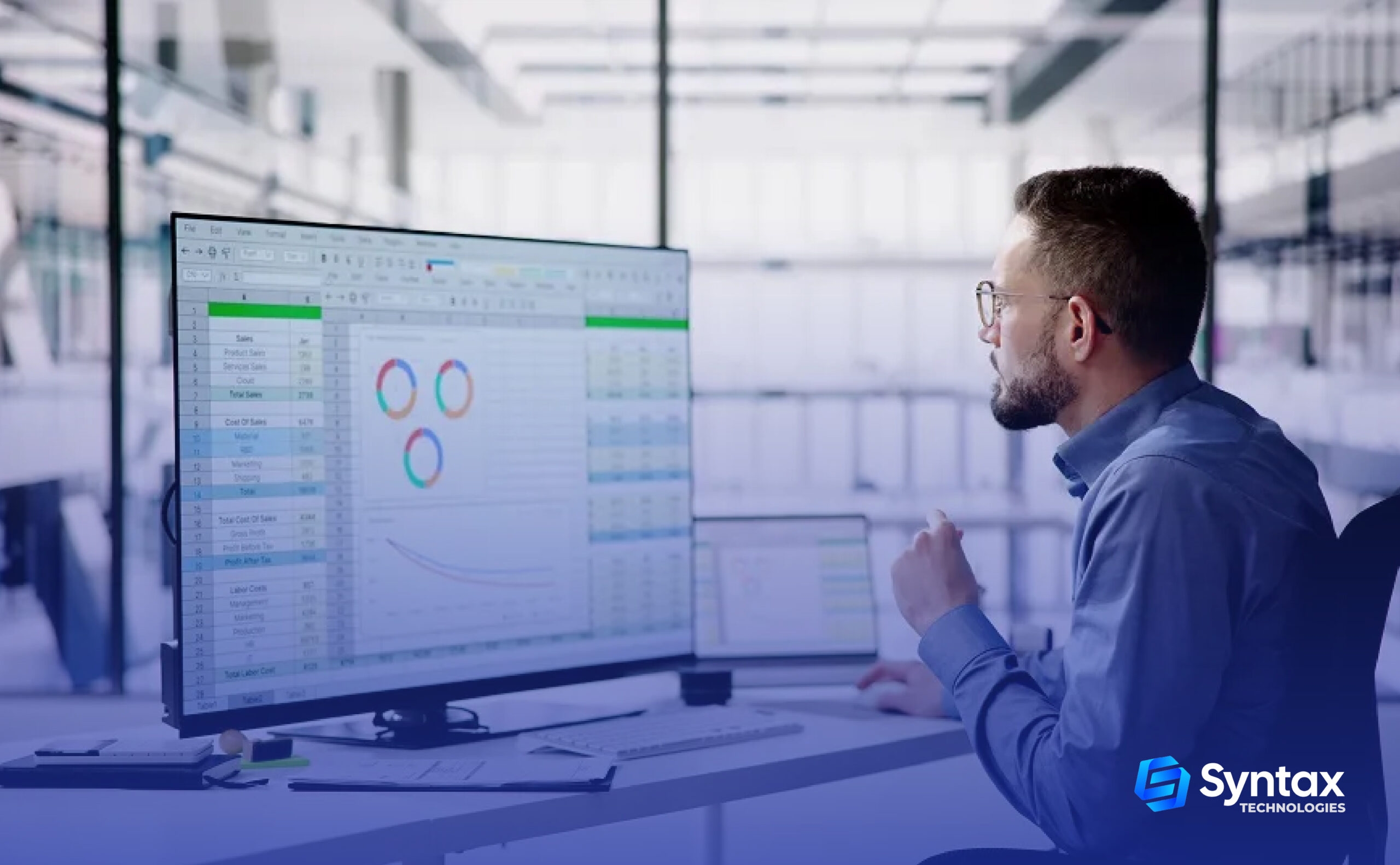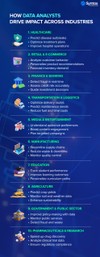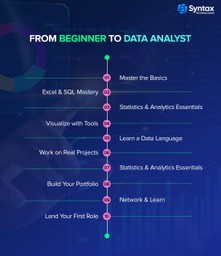Have you ever thought about jumping into the world of data, but thought it was too complicated or that you’d need a degree in computer science? Guess what? You don’t need a fancy degree to land a job as a Data Analyst. It’s actually one of the quickest and easiest ways to get into the tech world—even if you don’t have a tech background.

In this blog, I’m going to walk you through the fastest way to become a Data Analyst and actually land that first job.
What Exactly is a Data Analyst Job?
Before we dive into how to become one, let’s quickly talk about what a Data Analyst does. At its core, a data analyst helps businesses make better decisions by turning raw data into useful insights. You’ll be looking at numbers, cleaning them up, and making them easier for other people to understand.
For example:
- Retail companies use data analysts to figure out which products are selling well or which stores are performing the best.
- Healthcare organizations might hire data analysts to look at patient data to spot trends and improve care.
Your day-to-day might involve:
- Gathering and cleaning data
- Creating reports and dashboards
- Visualizing data (think graphs and charts)
- Presenting your findings in a clear, understandable way
Why Should You Consider a Data Analyst Job?
There are a few reasons this career is pretty awesome, especially for beginners:
- It’s in High Demand: Companies are collecting more data than ever, and they need people to make sense of it. The demand for data analysts is growing fast, and there are tons of job openings.
- Good Pay: Starting salaries for data analysts can range from $60,000 to $90,000 per year. Not bad, right?
- Career Growth: Once you’re in, the possibilities are endless. You can move into higher-paying roles like data scientist, business analyst, or even management.
- Flexibility: Data analysts are needed in almost every industry. Whether you’re interested in tech, healthcare, finance, or even marketing, there’s a spot for you.
The Fastest Way to Become a Data Analyst and Actually Get a Job
Let’s talk about the fastest way to become a data analyst. You don’t need to spend years in school or become a coding expert. Here’s how you can get started:
Step 1: Get Comfortable with the Basics
The first thing you’ll need to do is build a solid foundation. This doesn’t take long. You can start with a few basic tools that are crucial to the job.
What Skills Do You Need?
- Data Cleaning: Learn how to fix missing values, duplicates, and outliers to prepare data for analysis.
- Data Interpretation: Understand how to extract insights from numbers, such as identifying trends and patterns.
- Basic Math & Stats: Get comfortable with basic statistics like averages, medians, and standard deviations.
- Visualization Fundamentals: Learn the basics of creating simple charts and graphs to communicate your findings clearly.
Don’t Forget Soft Skills.
- Communication: You’ll need to explain complex data in simple terms. Think of it as telling a story—one that makes sense to people who aren’t as familiar with data.
- Problem-Solving: A big part of data analysis is figuring out what the data is really saying. Being able to identify problems and think critically is key.
Step 2: Learn the Tools & Technologies
Now that you know the basics, the next step is to get comfortable with the tools used in the industry. You can learn most of these for free or at a very low cost.
- Excel: Master basic functions like formulas, pivot tables, and data formatting for quick analysis.
- SQL: Learn how to use SQL to query and manage data in databases using basic commands like SELECT, JOIN, and WHERE.
- Data Visualization Tools: Start with Power BI or Tableau to create visual dashboards and reports that simplify data insights.
- Python or R (Optional): Learn the basics of Python or R for more advanced data manipulation and automation.
Step 3: Get Hands-On with Real-World Projects
You won’t really learn until you put your skills to work. So, start applying what you’ve learned by working on real-world projects.
Here are some ideas:
- Sales Data: Use a free dataset from sites like Kaggle and analyze sales trends. You can answer questions like, “Which products are the best-sellers?” or “When do sales peak?”
- Customer Feedback: Analyze customer satisfaction surveys. What trends do you see in the responses? Can you identify areas for improvement?
- Public Data: Use data from open government websites or other public data sources. You can analyze anything from healthcare data to climate statistics.
It’s important to document these projects and share them in your portfolio. You don’t need to be perfect—just show that you understand the process and can make sense of data.
Step 4: Build Your Portfolio
Your portfolio is going to be your best friend when applying for jobs. Think of it as your “show-off” space where you display your best work. It doesn’t need to be huge, but it should include a few key projects that highlight your skills.
- Jupyter Notebooks: If you’re doing any Python work, Jupyter Notebooks are a great way to show off your analysis and code in one place.
- Power BI/Tableau Dashboards: These are great visual tools that employers love to see.
- Case Studies: For each project, explain what problem you solved and how you went about it.
Upload your work to GitHub, LinkedIn, or a personal website so employers can easily check it out.
Step 5: Take an Online Course or Bootcamp
If you’re feeling a bit lost or want to speed up the process, consider signing up for an online course or bootcamp. These are structured programs that will take you through the essential skills you need, step by step.
- Bootcamps: Intensive programs like Syntax Technologies’ bootcamp can teach you the basics of data analysis in just a few weeks. You’ll learn the tools, work on projects, and even get career support.
- Online Courses: Sites like Coursera, Udemy, and LinkedIn Learning offer data analysis courses for beginners. Some even provide certificates to help you stand out on your resume.
Articles you may like:
“What Can You Do with a Data Analytics Degree?”
“Getting Data Analytics Jobs: A Step-by-Step Guide”
Step 6: Start Applying for Jobs
Once you have the skills and portfolio, it’s time to start applying for jobs. Here’s where to look:
- Job Boards: LinkedIn, Indeed, and Glassdoor are great places to find entry-level data analyst roles.
- Networking: Don’t forget to network. Join LinkedIn groups, attend meetups, and chat with others in the industry. A lot of job openings are filled through referrals, not job postings.
Conclusion
Becoming a Data Analyst is one of the fastest ways to get into tech, and you don’t need years of experience or a fancy degree. With the right tools, a little practice, and a solid portfolio, you’ll be well on your way to landing your first job. Start learning today, and soon you’ll be turning data into actionable insights.
If you’re looking for expert guidance, Syntax Technologies offers a comprehensive Data Analytics course that covers all the essential skills and tools to kickstart your career. With hands-on projects and job support, you’ll be ready to land that data analyst role in no time.


